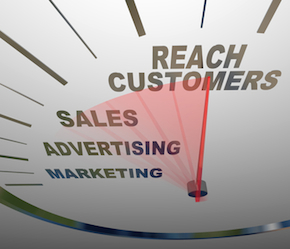 Marketing is the key to generate leads, identify future prospects and convince others of the value of working with you. It follows that most articles on marketing focus firmly on getting the most benefit from your marketing methods – should you purchase pay-per-click ads? How should you incorporate social media? Do email blasts really work?
Marketing is the key to generate leads, identify future prospects and convince others of the value of working with you. It follows that most articles on marketing focus firmly on getting the most benefit from your marketing methods – should you purchase pay-per-click ads? How should you incorporate social media? Do email blasts really work?
However, once your marketing is successful – as measured by a prospect reaching out by phone or contact form – how do you transition from marketing to sales?
Sales strategies vary greatly between different companies, between prospects working with the same company, and even at times in working with a single prospect. With that in mind, below are several questions (and a few suggestions) to consider when following up with your prospects.
Initial Factors to Consider
How quickly do you respond to a contact?
A contact form arrives at 11 am. Are you on the phone by 11:02 or do you wait until after lunch to follow up? Are you equipped to meet your target response time? Can you retain a lead if your response time lags?
Your response speed may depend on the industry or industries you serve, or on the time the initial inquiry comes in. In any case, it’s typically beneficial to reach out quickly. A Leads360 report from late 2012 concludes that you should place the first phone call within one minute of receiving the lead information.
Response time is a small window – according to Dave Elkington of InsideSales.com, your chances of reaching the prospect decrease exponentially after five minutes.
How frequently do you reach out to prospects?
The line between aggressive and obnoxious is thin, moving, and easily crossed. Do you leave voicemails if you cannot reach a lead by phone? Do you send text messages to mobile numbers? Do you default to phone or email?
Once you make contact, avoid “obnoxious” levels of communication by establishing the prospect’s communication expectations. Some leads expect daily updates while you are working the deal, while others may not need to hear from you unless something has changed.
What happens, though, when you can’t actually reach the prospect at all?
Unreachable Prospects
How many times have you had a prospect fill out a contact form or make an initial inquiry and then fall off the face of the earth? Sadly, it happens all too often – and if you recall from above, vanishing leads may be due to your response speed.
But let’s assume that you respond to leads within five minutes and you haven’t been able to get them – or keep them – on the phone. When you have a lead that you can’t pin down, the most important question becomes:
When and how do you draw the line?
At some point, the economic benefit of closing the deal is not worth the time and effort you have put into working it. The only way for you to remain successful is to invest your resources wisely, and that means figuring out when to stop pursuing a lead.
Again, statistics make a compelling suggestion. The Leads360 report above found that 93 percent of leads are reached within six phone calls and five emails over the course of three weeks. You may make case-by-case decisions depending on how big a prospect is or its likelihood to close, but in most cases these figures will hold true.
Once you decide to stop pursuing a prospect you have two options to disengage: a “final correspondence” message or a fade-out. In nearly every case some message is better than none, even as simple as “this will be our final message to you.” You can also offer an open-ended invitation for the prospect to reach out again in the future.
Do you revisit non-responsive leads?
Finally, consider when you actually place a lead on the shelf forever. Do you have a process or policy for reaching out to stale leads? How soon do you attempt to make contact – 30 days, six months, one year? An quick email blast to non-responsive leads may yield positive results, so it is likely worth adding to your follow-up strategy.
There are no static answers, because every prospect is different. However, having a solid follow-up strategy in place will help you adapt to the needs of different prospects and lead you to many more successful conversions.
About the Author: Factor Finders specializes in finding factoring companies that can fund difficult-to-place deals. Our services help other factoring brokers capitalize on commissions that might otherwise be lost.
If you have a prospective transaction that you cannot find a funder then contact us at FactorFinders.com. We’ll find the factor for you and split commissions 50-50.

